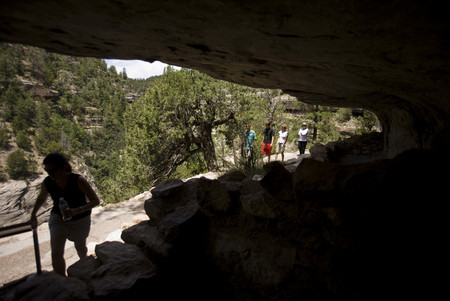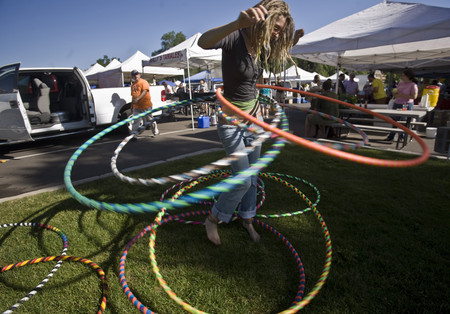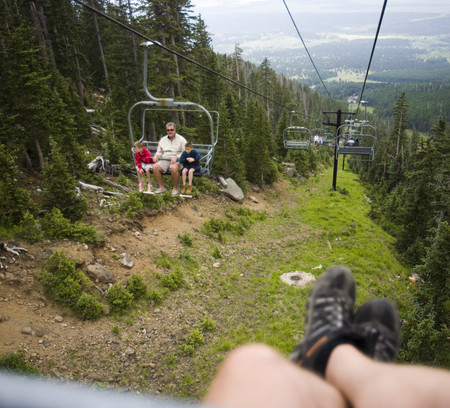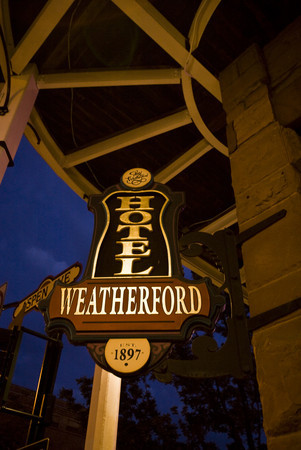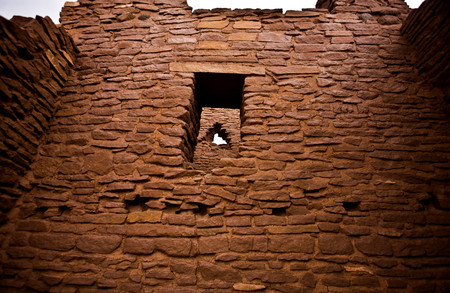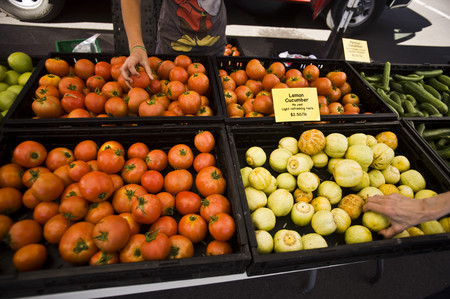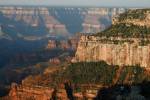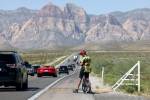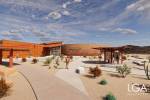Flagstaff features cooler temperatures, outdoor activities and a taste of history
The three couples at the England House Bed and Breakfast in Flagstaff, Ariz., were in town for the same reason my husband and I were -- to get out of the heat. The couples all were from Phoenix, where temperatures that July weekend were around 113 degrees, about five degrees warmer than Las Vegas. In Flagstaff, where the elevation is 7,000 feet, temperatures were in the mid-80s.
Flagstaff is a true Western town of 60,0a00 (plus 20,000 Northern Arizona University students during the school year) with a vibrant downtown area and forested mountain surroundings.
Our bed and breakfast hosts, Laurel and Richard Dunn, moved to Flagstaff in 2003 to get away from the big-city life of San Diego.
"I was taken aback at the friendliness of the people when I first moved here," Laurel Dunn said. The couple soon fell in love with their new hometown, where Laurel Dunn said the pace is "palpably" slower than San Diego.
My husband, Jeff, and I were there to enjoy the outdoors, something that's difficult to do during the hot summer days in Las Vegas. And Flagstaff offers plenty of opportunities to take a walk, hike or bicycle.
The Flagstaff Urban Trails System is a citywide network of shared-use pathways that are used by bicyclists, walkers, hikers, runners and others for both recreation and transportation. There are nearly 50 miles of designated trails in Flagstaff -- some of which are located along busy streets, while others traverse beautiful natural places.
We took a trail near the England House, which is located in a quiet neighborhood within walking distance of central downtown. The trailhead begins in Thorpe Park and climbs up through a Ponderosa pine forest.
It was warm and sunny when we left the B&B, but it wasn't long before the skies began to darken. Despite the looming rain clouds and increasing thunder, we passed several joggers and other hikers. We had gone about a mile when it started raining, which caused the temperature to briefly fall about 20 degrees, and had to make quick work of the return downhill hike.
While Flagstaff has some blockbuster indoor attractions, such as Lowell Observatory, Museum of Northern Arizona and Riordan Mansion, we were sticking with our outdoor sightseeing schedule -- even with the off-and-on rain showers -- and took the scenic drive that links Walnut Canyon, Sunset Crater and Wupatki National Monument.
Walnut Canyon National Monument is located eight miles from downtown Flagstaff. The visitor center is atop the canyon and has a huge picture window where you can see a number of cliff dwellings lining the steep ledges high above the canyon floor, which is about 400 feet deep. The Sinagua Indians used the cave dwellings during the 12th to 13th centuries.
A one-mile trail loops down through the canyon. It's a fairly strenuous trek with 240 steps and a descent of 185 feet, but well worth the effort. The narrow path leads past a number of dwellings that are accessible to visitors, and the varied vegetation is marked with explanations of how it was used by the Indians. Standing in the cave dwellings allows you to step back in time and reflect on the kind of life the inhabitants must have experienced.
From Walnut Canyon, it's a 10-mile drive to Sunset Crater Volcano National Monument. Born in a series of eruptions sometime between 1040 and 1100, Sunset Crater is still the youngest volcano on the Colorado Plateau. While you can't hike the crater, there is a short, steep trail to the smaller Lenox Crater, which provides a view of cinder dunes. Better yet is the easy walk along the Bonito Lava Flow trail, marked with black volcanic chunks and small crunchy cinders.
We continued along the road to Wupatki National Monument. The mountain landscape quickly gave way to flat desert, where the rock walls of the 800-year-old Wupatki pueblo jutted out of the barren landscape. A short trail leads to a multistory pueblo that once had about 100 rooms, and we were surprised that there was open access to climb around the crumbling structure. Wupatki is the largest of several pueblos in the area, which once was home to thousands of people.
While Flagstaff's surrounding hillsides provide a lot of reasons to get out of town, the compact historic downtown draws visitors back in with its shopping and dining scene. We got a lesson in its history by taking the Historic Downtown Walking Tour, offered by the visitor center.
In the 1870s, Flagstaff basically was a campsite along a pioneer trail used by settlers moving to the West during the Gold Rush. The trail, which was scouted by Edward Beale between 1856 and 1870, later became part of Route 66 and the route for the east-west transcontinental railroad.
Like many Western towns, the arrival of the railroad in 1882 marked a turning point in the history of Flagstaff. The train gave shepherds, loggers and cattlemen access to markets for their products, and those industries soon thrived in the region.
"If there's one thing that you take away from this tour, it's that Flagstaff would not be here without the train," said guide Justin Connors, administrative assistant with the Flagstaff Visitor Center.
The train still plays a prominent role in Flagstaff. It's a regular Amtrak stop on the Chicago-Los Angeles passenger route, and freight trains rumble through town day and night. And while the railroad is important to Flagstaff, it's also a point of contention -- especially with visitors who like peace and quiet at night.
Flagstaff officials have been trying for three years to create a quiet zone that would prevent train engineers from tooting their horns in town. The proposal is under consideration by an administrative judge from the Arizona Corporation Commission.
With the advent of the railroad, Flagstaff quickly became a wild town of saloons, dance halls and gambling houses. Shooting and lynchings became common occurrences.
There are two historic hotels downtown still in operation: the Hotel Weatherford, which opened in 1900, and the Historic Hotel Monte Vista, which opened in 1927. They are both haunted, according to Connors, who should know. He also leads ghost tours throughout the month of October.
And speaking of ghosts, downtown Flagstaff almost became a ghost town in the 1980s after the opening of a suburban mall led to the closure of many of the town center's small retail outlets. But several local initiatives helped transform the area back into a social center.
In the early '90s, the Flagstaff Main Street Program began rebuilding sidewalks, planting trees and removing modern siding from old buildings. Now, these historic buildings house nonchain clothing boutiques, restaurants and bars with outdoor seating, sporting goods outlets, art galleries, jewelry stores, Indian craft shops and used book stores. Much of the jewelry and art in the downtown shops is made regionally.
A vacant building was torn down in the center of town, and, in 1999, Heritage Square was completed in its place, creating a public space for downtown events. The square was packed on that Friday evening with families sitting on blankets and lawn chairs to enjoy a child-friendly film as part of the summertime Movies on the Square. Live music was performed Saturday afternoon as part of a summer concert series. And a birds of prey demonstration was presented Sunday by the Arboretum at Flagstaff.
Down the street, the Flagstaff City Hall parking lot is the site for a Sunday farmers market, a regional market that operates for growers and producers of agricultural and related products.
During the weekend of our visit, the downtown area was busy at all times of day, but more so at night. An abundance of live music guarantees a steady stream of late-night partyers.
We enjoyed the music presented in the pedestrian alley outside Flagstaff Brewery, which hosted Vokab Kompany, a seven-piece band out of San Diego that performs what is described as hip-hop, electro, crunk fusion.
Before we drove back to Las Vegas on Sunday, we took a 30-minute drive to Arizona Snowbowl. In the summer months, the ski resort operates a Scenic Skyride aboard a chairlift to 11,500 feet. On a clear day, you can see the Grand Canyon 70 miles away. Cloudy conditions and the smoke from nearby fires obscured the view, but we did see a small doe grazing on a bush just off the run underneath the lift. The lift, which runs at half speed, takes 30 minutes to get to the top and another 30 minutes down.
Slide show
IF YOU GO
Getting there: Flagstaff is a relatively easy 250-mile drive from Las Vegas, depending on the traffic conditions at Hoover Dam. Take U.S. 93 south and merge onto Interstate 40 east in Bullhead City.
Accommodations: The England House Bed and Breakfast, which is on the National Register of Historic Places, is beautifully decorated with period pieces. We stayed in the small pantry room, about which B&B owner Richard Dunn joked that we could climb right out of bed into the shower. While that’s not quite true, the room is very small. Spend the extra money and get one of the lovely upstairs rooms. Breakfast features organic fruit and juices. The B&B’s location at 614 W. Santa Fe Ave. is in a quiet neighborhood but within walking distance of downtown. Room prices range from $129-$199.
We also stayed a night at the Hotel Weatherford in the heart of downtown. We upgraded to one of the larger “newly restored” rooms. It was a cavernous room, but not very functional (no closet and the dresser drawers were full of blankets). The peeling paint in the bathroom made me wonder how recent the restoration project was. The hotel’s third-floor Zane Grey Bar offers the best views of downtown from its wraparound balcony. A ground-level bar, Charly’s Pub, offers live music. Room prices range from $49 (shared bath) to $130.
Dining: We had lunch at the popular Mountain Oasis, with its brick walls, high tin ceiling and large front windows facing Heritage Square. We split the spinach melt wrap, a new twist on an old favorite with spinach, roasted red peppers, grilled onions, sauteed mushrooms, organic brown rice and pepper jack cheese.
Brix, Josephine’s and Cottage Place top most everyone’s list for fine dining in Flagstaff. We dined at Cottage Place, and while the food was good, it didn’t have the “wow” factor we were hoping for and the preparation seemed dated.



